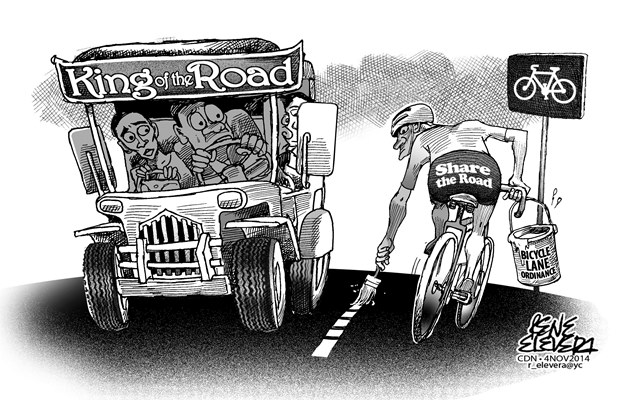You have to hand it to the bikers’ groups who lobbied hard for the approval of the bike lanes ordinance. It was passed on final reading by the Cebu City Council last week.
As a show of force for their campaign to build shared bike lanes in the city, they were present in every session where deliberations were made on the ordinance sponsored by Councilor Nida Cabrera, a trailblazing environment advocate in Barangay Luz who championed solid waste management and recycling.
They already won half of the battle. The ordinance sent to Cebu City Mayor Michael Rama’s office is practically signed. The mayor’s approval is a given considering that he’s been pitching the standard of a sustainable, livable Cebu City in his election campaigns.
But it goes without saying that the ordinance won’t be fully implemented without input from agencies like the Cebu City Traffic Operations Management (Citom) which had reservations about setting up bike lanes based on the existing road network in the city.
The lessons learned from the two recent road share experiments, the latest of which was done in September, showed how constricted road space is in areas like Fuente Osmeña circle which resulted in turtle-like pace of vehicular traffic.
This caused no small inconvenience to commuters who struggled with road closures during the Road Revolution held on a Saturday two years ago.
The bike lanes ordinance is no guarantee that bike lanes will appear in Cebu City’s streets overnight.
If anything, it highlighted the enormity of the task facing Cebu City’s planners and developers, including Citom.
It would take smart planning, innovation and a lot of political will and funding to establish lanes for bicyclists whose numbers will grow as the lanes actually appear.
Safety on the road would be the main concern.
In building bike lanes, Cebu City’s developers may want to refer to the 1996 document “Cycle-friendly infrastructure: Guidelines for planning and design” drawn by the British Cyclists’ Touring Club (CTC) and the Institute for Highways and Transportation.
Some of the questions the document posed include: Can traffic levels, particularly of heavy vehicles, be reduced? Can speed be reduced and driver behavior modified?
But even these materials should undergo review and be compared to the actual Filipino driving and commuting culture.
The work ahead to make bike lanes in Cebu City a reality is still substantial but it happily signals a more open mind now to giving Cebuanos options for mobility that are healthier and less dependent on pollution-causing, fuel-inefficient motor vehicles.
Disclaimer: The comments uploaded on this site do not necessarily represent or reflect the views of management and owner of Cebudailynews. We reserve the right to exclude comments that we deem to be inconsistent with our editorial standards.

